“Now it is sure that the virus can spread through human-to-human transmission,” Zhong Nanshan publicly expressed his opinion in News 1+1, a live telecast program of CCTV news channel in China, during its evening broadcast on January 20, 2020.
While telling the public “Do not go to Wuhan if you don’t have to”, the 84-year-old expert rushed to the frontline of the epidemic by high-speed train on his own. As every household was celebrating the Spring Festival, he was working in Wuhan, the very site of the outbreak of COVID-2019. He chose to brave the coronavirus risk and was hailed as a “hero in harm’s way”. It was also this man who, 17 years ago when SARS (Severe Acute Respiratory Syndrome), another coronavirus epidemic was rampant in China, came to the stage and said, “Send the most critically ill patients to me”. At that time, he was 67 years old. Since then, people have remembered this honest old man. He is the hero of our story today—Zhong Nanshan.
Wuhan, the capital city of Hubei province, is the most populous metropolis in central China and the most important commercial and industrial center on the Yangtze River. This city had never thought she would become the epicenter of a severe epidemic. At the very beginning of the outbreak, local people might have heard that hospitals were overwhelmed with patients suffering from fevers and coughs. It was three days before Chinese New Year’s Eve, when people all over the country were busy doing New Year’s shopping to bid farewell to the old year and usher in the new. What people didn’t know was that a plague was about to rage across their city. Zhong Nanshan’s words served as a wake-up call. From that moment on, Wuhan, other cities in Hubei province and the whole country began the tough and formidable fight with COVID-19.
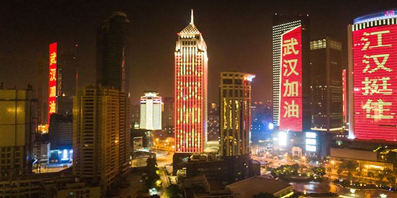
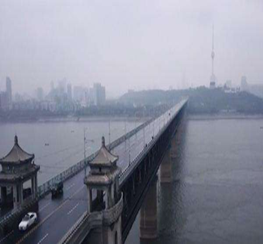
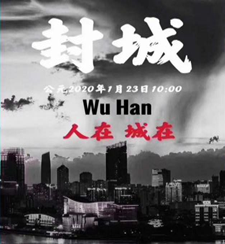
Zhong Nanshan, an academician of the CAE (the Chinese Academy of Engineering), is an eminent respiratory specialist and a leading figure in China’s fight against SARS. He once worked in the First Affiliated Hospital of Guangzhou Medical College as the director of Guangzhou Institute of Respiratory Diseases and has been there for nearly 40 years. Established in 1979, Guangzhou Institute of Respiratory Diseases is one of China’s top respiratory clinics. Now it is the support unit of the state key laboratory of respiratory diseases and Guangdong provincial key laboratory of respiratory diseases, as well as the national key discipline and the national clinical pharmacology base.
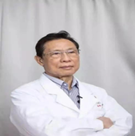
Zhong Nanshan was born on October 20, 1936, into a family of doctors in Nanjing, Jiangsu province. His father, Zhong Shifan, was a famous pediatrician who studied in the United States in his early years and became a first-class professor in Zhongshan Medical University after China’s Liberation (1949). Zhong’s mother, Liao Yueqin, also a graduate of advanced nursing, is one of the founders of Guangdong Cancer Hospital.
Zhong Nanshan was lively and intelligent when he was young. His family’s influence parented him to show interest in medicine and conceive the idea of becoming a doctor when he was very young. “I can help people, win social respect and find self-satisfaction in being a doctor, and these are reasons why I loved it at that time”, he said.
In 1955, Zhong Nanshan was admitted to the medical department of Beijing Medical College (now called the Peking University Health Science Center) with excellent grades, taking the first step toward his dream of becoming a doctor. At that time, he was only 19. After graduating in 1960, Zhong chose to remain and teach radiology at Beijing Medical College. During the Cultural Revolution, Zhong Nanshan was once tasked to operate the boiler by the school committee, and also worked and lived with farmers in the countryside. Not until 1971 did he receive an opportunity to leave Beijing on military orders, when he became a doctor at the Fourth People’s Hospital of Guangzhou (later renamed the First Affiliated Hospital of Guangzhou Medical College).
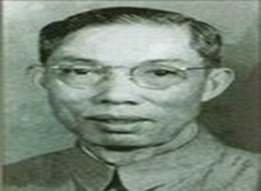
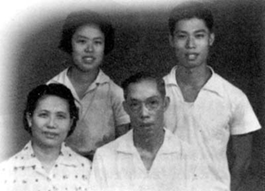

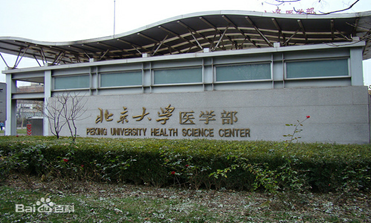
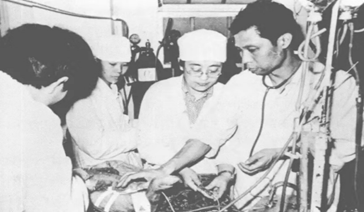
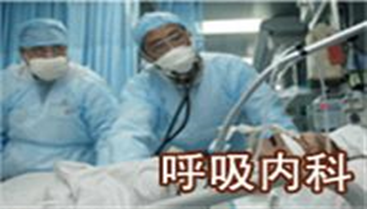
Zhong Nanshan was nearly 36 years old by the time when, unbeknown to himself, he met two major turning points in his life. In September, 1971, when Zhong returned to Guangzhou from Beijing, and for some time afterward, he felt his father’s anxiety. What was his father worried about? He dared not ask. Until one day, in mediation, his father asked him, “Nanshan, how old are you now?” Not knowing what his father meant, he replied that he was thirty-six. “Oh, already thirty-six. That’s terrible”, his father sighed deeply. With his father’s words in his mind, Zhong was determined to set the Thames on fire someday. This was the first turning point in his life.
The second turning point happened shortly after he arrived at the hospital, where Zhong misdiagnosed a patient who coughed up black and red blood with tuberculosis, and who the next day was found to have hematemesis of the digestive tract, which nearly killed the patient. This experience greatly influenced Zhong, and he began to study medicine more intensely. Eight months later, Zhong Nanshan had written four notebooks full of notes and had become an expert in emergency care, with doctors at the hospital praising Zhong as “worthy enough to be an attending doctor.”
In 1979, Zhong was appointed director of Guangzhou Institute of Respiratory Diseases.
More impressively, in the same year, Zhong Nanshan obtained government-fund support and attended the University of Edinburgh to further his studies. He was 43 years old at that time.
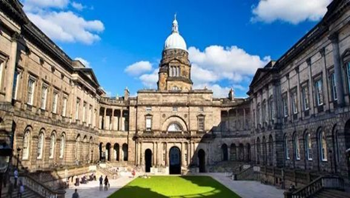
Zhong Nanshan arrived in London on October 28, 1979. Before long, he received a letter from his preceptor, Professor Fleury, head of the department of respiratory sciences at the Royal Hospital of Edinburgh. “You should be aware that your qualifications as a doctor in China are not acceptable under British law, so you are not allowed to do clinical work. You can only visit laboratories or wards here,” the letter stated. “In this case, it will be suitable for you to stay here for no longer than eight months…” Zhong Nanshan felt like a ladle of cold water had been poured on him, because of this unexpected piece of advice.
Zhong Nanshan did not lose heart despite his preceptor’s words and the indifference of his peers. Instead, he determined to make the most of his situation. He started from inspecting the wards, where his insights and extensive knowledge soon gained the attention of his peers. On one of his rounds, he encountered a patient suffering from pulmonary heart disease with sub-respiratory failure and refractory dropsy. Although doctors had been using diuretics for a week, the patient’s edema had not subsided and his life was in danger. After analyzing the patient’s medical history, Zhong Nanshan used TCM syndrome differentiation to diagnose the patient as having metabolic alkalosis. Zhong proposed a different and controversial treatment, over which doctors were at loggerhead for a while. Unable to reach a consensus, they were forced to wait for Mr. Fleury’s decision. Half-thinking, with a complicated look at the obdurate Chinese doctor in front of him, Professor Fleury instructed a nurse to take a blood test for this patient. The result showed that the patient did suffer from metabolic alkalosis. Without hesitation, Mr. Fleury gave instructions: “Follow the treatment plan of Zhong Nanshan, the Chinese doctor.”
After four days of treatment, the patient finally recovered. “Get to know the Chinese again,” Zhong’s British peers all said. It was not until then that his British counterparts began to have trust in him and cooperate with him.
On another occasion, Zhong Nanshan spotted a problem with a project related to smoking cessation when he questioned the results derived by his preceptor. Zhong immediately decided to conduct experiments to test these results. Regardless of the risk to his own life, he experimented directly on himself by inhaling carbon monoxide and then testing his blood. Three months later, his paper overturned his preceptor’s conclusion and was recommended by his supervisor to be published by the British Medical Council. Since then, Zhong has established several principles for himself: Fear no authority, tell the truth, and respect evidence.
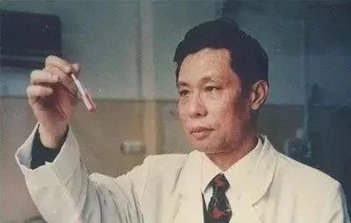
At the University of Edinburgh, Zhong Nanshan specialized in the prevention and treatment of respiratory diseases. He made six important achievements and published seven academic papers, and presented at meetings of the Research Association, the Society of Anesthesiology and the Society of Diabetes of British Medical College. When Zhong finished two years of study, Professor Fleury repeatedly asked him to stay and work in the UK, but he was determined to return to China and render good service in his homeland. He said, “It is China that sent me to the UK. My motherland is now in need of me, and my career is in China.” After returning from the UK, Zhong resumed his work at Guangzhou Medical College where he was elected an academician of the Chinese Academy of Engineering in 1996.
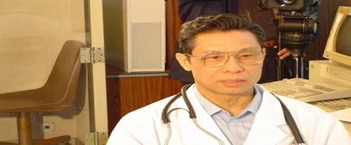
It was the winter 17 years ago when a terrible epidemic was brewing in China. On December 22, 2002, a patient with a fever, cough and breathing difficulty hurried to the First Affiliated Hospital of Guangzhou Medical College. After a few days of treatment for common pneumonia, the patient’s condition did not improve. Instead, more than eight patients with similar symptoms were sent to the hospital successively, and some medical workers tending the patients also showed similar symptoms. At that time, no one realized that the horrors of an epidemic were to prey upon them. Actually, Pandora’s Box was opened, which brought Chinese people a grave disaster.
By the beginning of 2003, news of the epidemic intensified. Rumors about this “strange disease” spread more widely among people, and the disease spread uncontrollably. In February 2003, as a leading expert on respiratory diseases in China, Zhong Nanshan stood in the front of the storm and was appointed as the leader of Guangdong SARS medical aid expert panel.
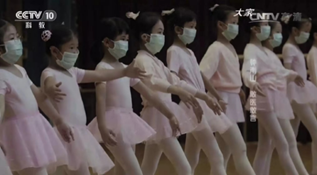
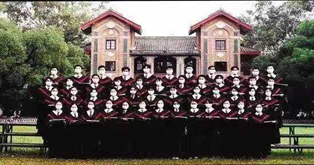
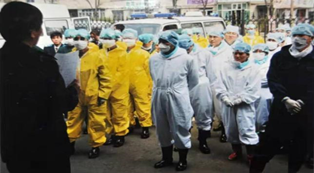
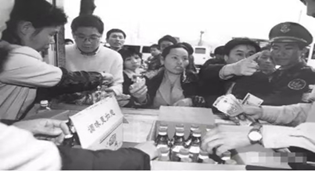
Fig 14-17: SARS epidemic hit hard in China
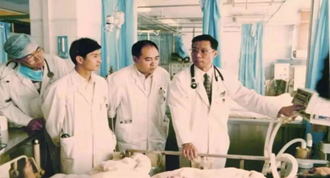

In Beijing, as authorities declared that “the pathogen can be identified as chlamydia” and recommended antibiotics for treatment, Zhong Nanshan stood firmly, opposing this diagnosis. He had yet to find antibiotics effective against this new pathogen, which would eventually be identified as SARS, and repeatedly emphasized that the pathogen was not chlamydia and that antibiotics should not be used. Zhong was considered “emotionally unintelligent” for his open challenges to authority and peers.
In April 2003, the Ministry of Health held a press conference in Beijing, where some officials declared that “the epidemic has thus far been controlled.” Although Zhong had been told “to mind his words” before the conference, he could not help telling the truth. “What does it mean that the disease has been controlled now? There is no control at all! We don’t even know the pathogen yet. How can you control it?” The whole country was shocked by his comments. An unknown disease escaped from Pandora’s Box, covering the country with fear and chaos. But Zhong’s words, like torchlight at midnight, led the way of defeating this outbreak.
Zhong later revealed that he had stood in front of his father’s grave for a long time before the press conference and had finally decided to tell the truth, since he believed that “the truth is as important as the genuine medicine”.
“The epidemic was spreading all over the country, and we had already had 20 doctors infected. This was no joke. Although SARS was an epidemic, rumors and panic in society are another epidemic. In retrospect, the latter was even more destructive,” he said.
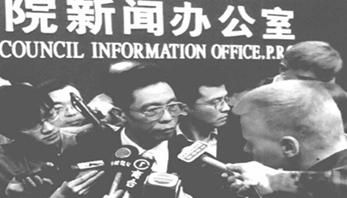
Zhong had been fighting SARS for four months before the news conference. In mid-January, 2003, Zhong Nanshan, who was already 67 years old, had worked for almost 38 consecutive hours without sleep, traveling around Guangzhou, Shenzhen and Hong Kong. On January 28, when he came out of the ward, he was struck with a headache and became ill from overwork. He had a fever, cough, and fatigue, followed by inflammation in his left lung which was shown through an X-ray, but according to his own observation, he didn’t contract SARS. To set a good example, he quarantined himself at home, driving a nail into the door frame to hang the infusion bottle. After a few days, his symptoms gradually cleared. He returned to the hospital immediately and continued his fight against SARS.
No one asked him to take this responsibility, but he was willing from the bottom of heart to do so. In the face of SARS, or any horrible diseases, Zhong has never forgotten his oath as a doctor and his vow to save lives. When SARS was at its height, he spoke up without any hesitation and actively chased down clues to fight against the virus, saying, “Send the most critically ill patients to me”. Former U.S. Secretary of State Kissinger said that the Chinese are always well protected by the bravest of them.
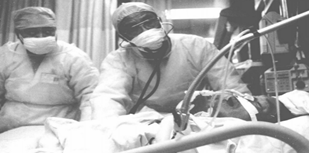
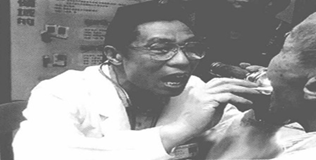
Fig 21-22: Zhong Nanshan was curing SARS patients
Zhong Nanshan proposed the treatment plan of “non-invasive ventilation” for SARS. Severe cases required a tracheotomy. These treatments were widely deemed as unthinkable by the medical community at that time, but the effectiveness of his plan was soon verified and the death rate was effectively controlled. Meanwhile, the recovery rate of critically ill patients successfully reached 87 percent.
From December 2002 to 2003, when the last three SARS patients were discharged from the hospital, the medical team led by Zhong Nanshan had fought for 193 consecutive days and achieved a miracle of 93% discharge rate.
Miracles are never bestowed by gods. It is exactly those people like Zhong Nanshan, who stand bravely between life and death in the medical world. Because of their efforts, humans finally understand what the virus truly is and are better prepared.
Throughout the SARS epidemic, the hospital where Zhong worked created the nation’s highest rescue rate of critically ill patients. By the end of SARS, people’s fears disappeared due to effective prescription and treatment.
On May 16, at the 2003 International Academic Symposium organized by the National Thoracic and Lung Science Association in Seattle, Zhong Nanshan’s academic report on “The Incidence and Treatment of Severe Acute Respiratory Syndrome (SARS)” in China won the applause of more than 1,200 experts and scholars around the world. The chairman of the conference, Professor Bisser, emphasized in the summary, “We have obtained the latest report on SARS control experience, and the Asian experience will provide valuable inspiration for effective global control of SARS.” The next day, the American newspaper “USA Today” reported in detail that “the incidence of SARS in mainland China has decreased significantly, which is encouraging.”
In 2003, Zhong was awarded the only special merit by the Guangdong Provincial Party Committee and the Provincial Government, and the highest honorary title of the domestic health system—the Bethune Medal. The following year, he was honored as “one the most important Chinese who touches people to the heart” by the government of China. He is the Chinese hero against the terrifying respiratory virus known as SARS.
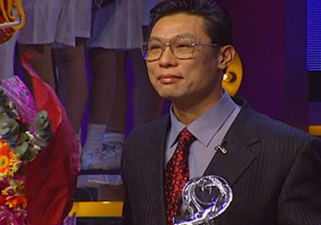
Today, 17 years later, when another epidemic approached, this noble man rushed back to the battlefield, ignoring his own advice to avoid Wuhan. Let’s take a glimpse of the working schedule of this 84-year-old man during this tough anti-epidemic war in the spring of 2020.
On January 18th, Academician Zhong received a notice commissioning him to go to Wuhan immediately. On the morning of January 19th, Zhong Nanshan, who served as leader of the high-level expert group of the National Health and Medical Commission, went to Wuhan Jinyintan Hospital and Wuhan Center for Disease Control to learn about the situation. There was no time to rest at noon, and the meeting didn’t finish until 5 o’clock in the afternoon. Zhong Nanshan boarded a flight from Wuhan to Beijing that night.
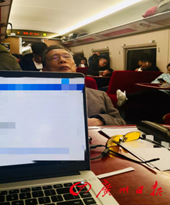
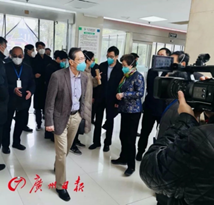
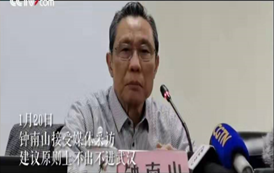
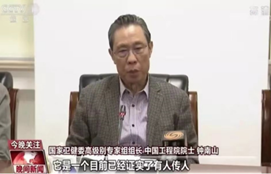
Fig 26-27: Zhong Nanshan's verdict on COVID-19
January 20 was another busy day for Zhong. At six o’clock in the morning, a day of tight schedule awaited: National TV conference, press conference, live media connection. He was busy late into the night again.
In an interview with the media on January 20th, with nothing to conceal, Zhong warned the public, “It is certain that COVID-19 can be spread through human-to-human contact. If you suffer a cold, go to the fever clinic. The source of the novel coronavirus hasn’t been confirmed yet, but there is a good chance that it comes from wild animals such as bamboo rats and badgers. Everyone should put on a face mask and remain on alert.”
“Seventeen years ago, there was a period when we didn’t understand the principles of the SARS epidemic at all and couldn’t find the pathogens. But now, it took us fewer than two weeks to identify the new coronavirus. In addition, we have good surveillance and isolation. I don’t believe this epidemic will be like SARS.”
On January 21, Zhong Nanshan attended the first news conference on the outbreak in Guangdong province, saying that the super spreaders were a thorny problem. January 24th was Chinese New Year’s Eve, but Zhong Nanshan still remained at the forefront of the counter-epidemic.
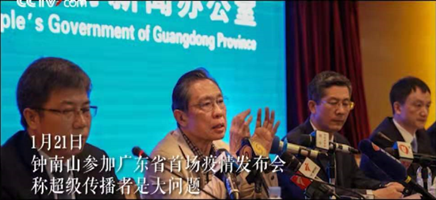
On the one hand, Zhong Nanshan is leading a high-level team of experts in working out the treatment of COVID-19, and on the other hand, he also provides guidance for the prevention and control measures for the common public. He warns the public to stay at home for days. Some netizens mused that “without Zhong’s words, we would never step out home”. They even made memes according to Zhong Nanshan’s prevention recommendations. Zhong urges that everyone should put on a face mask outside and demonstrates by himself as to how to wear and take off a face mask in a normative way. Chinese people trust in this honest and conscientious scientist. On January 28, Zhong Nanshan cheered up the comrades in support of the Hubei medical team on video in Guangzhou! “I wish you all the best! We are working hard here, but you are going to the hardest place, the front line, which is the hardest place, the most vulnerable place to fight. I hereby salute you.” When he was interviewed by the Xinhua News Agency, his eyes were filled with tears. He said, “A lot of things can be done if people keep this momentum. The whole country is working together and Wuhan is able to pull through. Wuhan has been such a heroic city historically.”
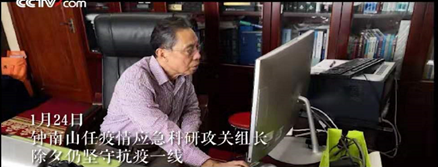
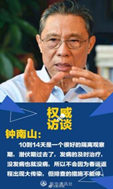
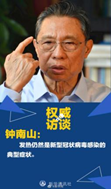
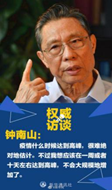
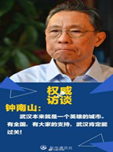

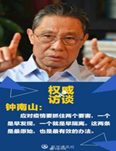
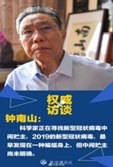
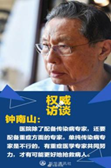
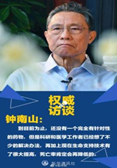
On January 30, Zhong Nanshan attended the remote consultation of critically ill patients in Guangdong Province. At 6 am on that day, Zhong Nanshan met with W. Ian Lipkin in Guangzhou, an American professor known as “a virus hunter”, to discuss the outbreak of COVID-19, hoping to make a breakthrough as soon as possible. Right after, he flew to Beijing again to attend the symposium on COVID-19. As people nationwide concerned about when the life can get back to the normal, when the parents can go back to work, and when the kids can start a new semester’s schooling, Zhong Nanshan shared his reminders.
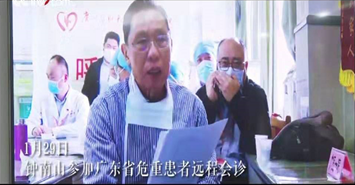
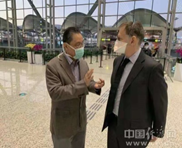
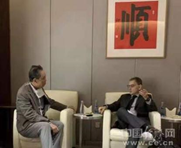

Fig 32-34: Zhong Nanshan met “virus hunter”, W. Ian Lipkin
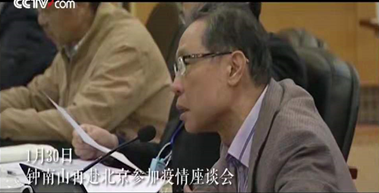
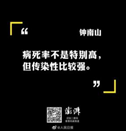

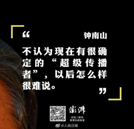

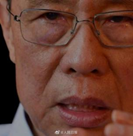
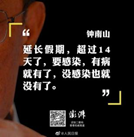
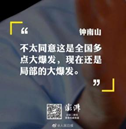
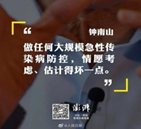
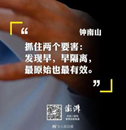
On February 1st, Zhong Nanshan saw off the Guangzhou medical team, who would begin the rescue of Wuhan. On February 2, Zhong Nanshan said COVID-19 may be transmitted through the fecal-oral route. On February 5th, in response to the hot debate on antiviral “specific medicine”, Zhong Nanshan said, “we can give clinical trials a quicker go through the green channel, but basic procedures should be strictly followed. We have to be careful and conduct an ethical review. Clinicians still have to observe clinical rules,” he said. In addition, the research team led by Zhong Nanshan released guidelines on the prevention of COVID-19 among the elderly.
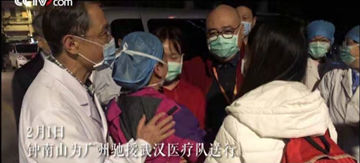
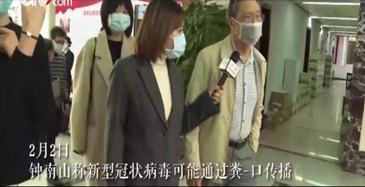
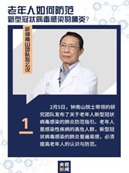
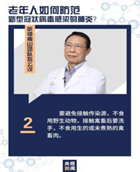
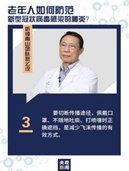
On the afternoon of February 7th, Zhong Nanshan accepted another interview on the turning point of COVID-19 epidemic. He said that the current outbreak has not reached the infection peak, and the key is still to make early detection and isolation. Indeed, early detection and isolation are the most primitive, but effective methods of control.
This man in his 80s, has such a firm gaze and a brisk gait, which is closely related to his aphorisms of life. One creed was handed down by his father: “If a person can create something for human beings, he has not lived in vain.” “People should not simply indulge in material world; they should also live with ideals or dreams. If people do not have ideals or dreams, they will take trivialities to heart and they will easily get disturbed and nervous; but if they have ideals or dreams, even if there are something disturbing around them, it will become negligibly trivial compared to ambition.” , the other one was given by his teacher when he was a middle school student. Zhong Nanshan has not only taken these words to heart, but also has been a practitioner all along. practiced them all along.
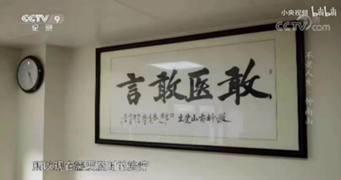
COURAGEOUS IN SPEECH AND MEDICAL TREATMENT
During the SARS, he told the truth about the epidemic and was pushed to the forefront of the storm. Facing the new coronavirus pneumonia, he revealed the truth to the public. In his office, there is a plaque hanging on the wall, which reads, “COURAGEOUS IN SPEECH AND MEDICAL TREATMENT”. He is such a doctor of initiative who speaks truth and blazes new trails. In the face of severe diseases, he worked tirelessly against them; In the face of rumors, he bravely told the truth.
Actually, after SARS, Zhong Nanshan still works on daily routines. He still keeps his voice heard from time to time, in and between his researches. He never likes formality and always focuses on his patients. Once, he opened up at the Two Sessions of Guangdong by saying, “Now, in everyone’s speech, eight minutes are affirmation and praises, two minutes are self-commendation, and the last minute is for questions and applause. I always wonder, what do we applaud for?”
He insists on telling the truth during public events. Zhong Nanshan was once named “Big Mouth.” He himself said, “I always have a hunch that I like to compete with others, and I always feel that no matter where I go, I am not very welcome.” But after much deliberation, he was still determined to be an upright scientist, not being obedient, but living without guilt, because “science requires us to respect the truth rather than be word-wise and play it safe.”
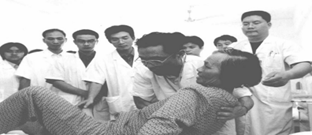
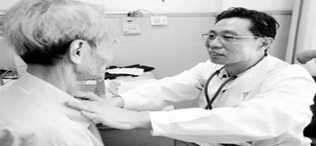
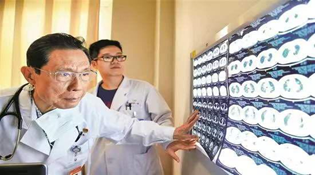
Occasionally, Zhong Nanshan could be wrong, but he likes to correct his “wrong doings”. For instance, in May 2009, he had a self-review in the face of media. “Yesterday I said that the case fatality rate of influenza A is similar to that of ordinary flu. This is wrong,” he stated. “The exact data indicate that the case fatality rate of ordinary influenza is more than zero percent and that of influenza A is more than one percent. Its fatality rate is higher than that of ordinary flu.”
At that time, Zhong was already a highly respected expert, but he remained calm and strictly adhered to the scientific spirit. “I have met many really learned people who dare to not only affirm themselves, but also deny themselves”, Zhong Nanshan said. “I want to speak with facts. Once it turns out that I was wrong, I will correct it.” The pursuit of truth and the pursuit of excellence have achieved his career and taken his life to a new height.
On April 29th, 2010, in the American Reader’s Digest magazine’s survey of the trustworthiness of Chinese celebrities, he and Yuan Longping received the highest votes. Seventeen years ago, his name came into our horizon. Since then, no one has forgotten the passion, strength, wisdom and knowledge he has brought to us. On January 20, 2020, the high-level expert group of the National Health and Medical Commission held a press conference, when it was announced that Zhong Nanshan was appointed as the group leader. Yes, he is once again firmly at the forefront of this epidemic prevention and control war.
Now, as this unexpected illness strikes, and the new coronavirus pneumonia is intensified, his determination in conquering the virus has never changed. “The hospital is a battlefield. As soldiers, if we didn’t go to the forefront, who would?” This thought echoes what he said many years ago. “I have been walking forward. If everyone has such perseverance and pursuit, and then work hard to move forward, there will be great gains. Everyone can do this without wasting his life. In this way, society will advance very fast, and so will the country.”
On Weibo, People’s Daily commented, “Zhong Nanshan, 84 years old, has the professionalism of an academician, the bravery of a soldier, and the responsibility of a Chinese scholar. He is tireless all the way, for the country and the people. He is indeed reverent.”
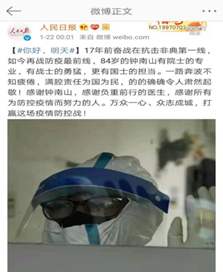
Some people make us believe, and some people move us. Zhong accomplishes both, as we believe our country will make rapid progress just as we expect. “Winter will eventually pass, and spring is sure to come. Many people have returned to work at the Start of Spring. They are firmly on the job, battling against the epidemic. Masks muffle the words, and the epidemic disperses gatherings, but these problems will never cut off our love and undermine our determination to conquer. Although the outbreak in the beginning of 2020 is fierce, it also connects the hearts of every Chinese more intimately through the struggle to contain it. We once collaboratively defeated SARS together, and we will definitely defeat COVID-19.
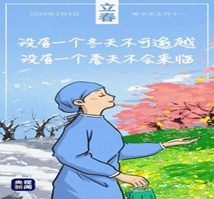
We often applaud medical staff as “angels in white”, appreciating their spirit of dedication. Many medical workers including Zhong Nanshan, have been making great contributions to health services in China. According to the statistical bulletin issued by the National Health Commission of the PRC, by the end of 2018, the number of health personnel across the country has reached 12.3 million, covering every city, suburban county, village, border area and remote mountainous region of China. They are in every corner across the country treating patients, saving their lives, and fulfilling the duties as doctors and nurses. Among them are people who once participated in fighting against SARS, joined the team rescuing the Ebola virus in West Africa, and now were back to struggle against the novel coronavirus pneumonia. There are also people who are inspired by the spirit of them and voluntarily work on the front lines of the COVID-19 epidemic. In this worst of times, we have seen the best from our Chinese medical staff. Their professionalism, dedication, and perseverance have been inherited from generation to generation, empowering us the confidence to win over the virus.
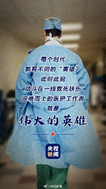
On 16 November 2002, the outbreak of SARS took place in Guangdong, China. A farmer in the Shunde district of Foshan County was the first case of infection. People infected with SARS virus could rarely be cured, and the virus was highly contagious. Within a few days, the number of infected people reached 8,422 with the death toll of 916, and the mortality rate was as high as 10.8%. From that moment, “angels in white” became “warriors in white”. They stood in front of patients, fighting virus and keeping patients alive, regardless of their own safety. Please do not forget that they are also brothers and sisters, daughters and sons, husbands and wives, and moms and dads as every ordinary man. In January 2003, associate chief physician Wu Hua and another male doctor of the Institute of Respiratory Diseases of the First Affiliated Hospital of Guangzhou Medical College were infected by SARS patients. They did whatever they could to treat patients, but they themselves also became patients because of infection. In the same year, on March 25th, Ye Xin, the head nurse of Traditional Chinese Medicine Hospital of Guangdong Province, died in line of duty. She was the first medical personnel who lost her life after being infected. Even now, there are many people who still remember her words. “It’s dangerous, but let me conquer it”, Ye Xin said of the disease. These medical professionals ARE our “warriors in white”.
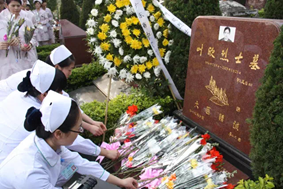
Now we are faced with another tough fight, the epidemic of COVID-19. The novel coronavirus is highly infectious and spreads fast. The SARS virus did not spread as fast as the novel coronavirus, based on the reported cases in the first three weeks, according to World Health Organization. It took almost five months for the SARS virus to infect 3,000 people, while 3,000 people have been infected in just 28 days due to the novel coronavirus.
However, this outbreak did not scare away health care personnel at the forefront. Local doctors and nurses dwelling in Wuhan, the outbreak epicenter in China, have been working on duties and responsibilities for the therapy and recovery of patient’s day and night, and hundreds and thousands from hospitals and clinical institutions across China flew in to back up Wuhan with their professional knowledge and unbreakable hearts. They bravely set foot on a journey full of dangers. Many ordinary people were touched by the words posted in Wechat Moments by Tang Sha, the head nurse of the Central Hospital of Wuhan. “They are not ‘angels in white’. They are just a group of kids dressed in the uniforms of doctors and nurses, young and innocent, saving patients’ lives from death like their predecessors.” That is right. Some of them are young and innocent, but fearless to go to the battlefield.
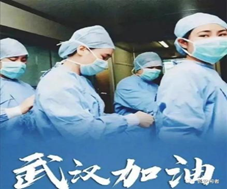
“I’m single, with no pressures of taking care of kids. My colleagues are fighting the novel coronavirus. Only when I work with them can I feel at ease in this new year,” said Wu Xiaoyan, 29 years old, a doctor of Wuhan University Renmin Hospital. She was on the way to her hometown for the Spring Festival when she heard the news of Wuhan’s serious situation.
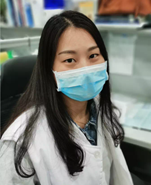
“If I cured one more patient, the less the danger would be for my son,” said Zhang Zhan, 46 years old, an associate professor of Wuhan University Renmin Hospital, who is now working at the frontline. She was once one of the medical staff who fought against SARS and was very clear about how dangerous the novel coronavirus would be. In the battlefield with invisible enemies, she really demonstrates what a true health care worker can do for the average people.
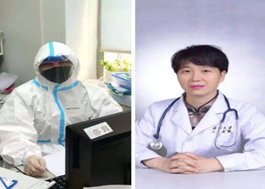
“I have to run faster, run against time. I must run faster so that I can save more patients from the virus,” said Zhang Dingyu, 57 years old, the president of Wuhan Jinyintan Hospital, one of the first COVID-19-designated hospitals. He himself suffers a lot from Amyotrophic Lateral Sclerosis (ALS), and his wife was also infected with the novel coronavirus after several days of hard work being exposed to the patients. Zhang Dingyu believes that his wife would receive the same careful treatment from his colleagues at another hospital. The firm figure and expressions of Zhang Dingyu spirit lots of ordinary people.
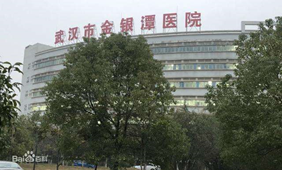
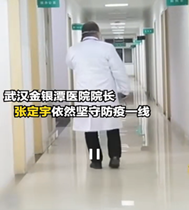
“The communists should all be on the frontlines. No exception!” The 100-second interview video clip of Zhang Wenhong, the leader of Shanghai Medical Treatment Expert Group and director of the Department of Infectious Diseases at Huashan Hospital, Fudan University, soon made himself an “internet celebrity”. He emphasized, “every member of the Communist Party should play an exemplary role at their own posts and step forward when needed by the country and the people.” As they fulfill their duties, the whole country will work in cohesion to fight against the novel coronavirus pneumonia.
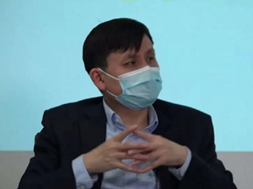
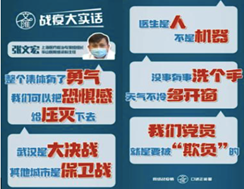
Chen Wei, an academician of Chinese Academy of Engineering, is a researcher at the Institute of Military Medicine, Academy of Military Sciences and a major general of the Chinese People’s Liberation Army. During SARS, Dr. Chen Wei and her team confirmed the effectiveness of interferon-omega in the shortest time, protecting 14 thousand medical staff from being infected with the SARS virus. In 2014, Chen Wei and her team developed the first 2014 genotype Ebola virus vaccine, also the first Ebola virus vaccine in the form of freeze-dried powder. She focuses on the research and development of antiviral drugs and has developed the first recombinant vaccine that has been included in national strategic reserve with her team. Now, Chen Wei and her team are sparing no effort to fight against the novel coronavirus in Wuhan.
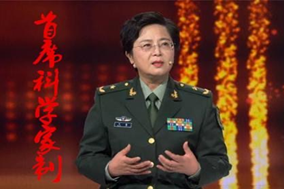
They are wearing surgical masks, goggles and protection suits, and we may not know who they are, what they look like, or where they are from. All that we truly perceive is their commitment to their duties, making every effort in treating patients and saving lives despite all the sacrifices.

“Waiting for your triumphant return,” said by a medical worker’s fiancée.
“Mom, you haven’t been home for days,”, said by a medical staff’s son.
“I’m willing to fight the virus for you,” said by hundreds and thousands of medical personnel.
“Everything will be fine,” said by a medical staff while paying a New Year call to a patient.
“You will be fine. We are here for you,” said by a head nurse in order to comfort an elderly patient who shed tears due to fear.
Doctors and nurses are spiritual pillars for patients. They battle against the novel coronavirus at the forefront, remaining at their posts even when their face were hurt due to wearing masks for a long time. But please remember they are also others’ family members. Please respect their dedication and show your kindness. It is because of their perseverance that many people can recover from the COVID-19 and still have opportunities to accompany their family members.
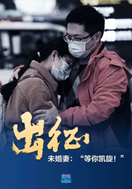
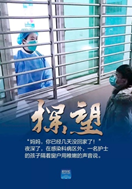
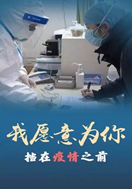
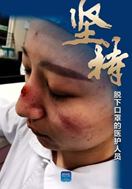
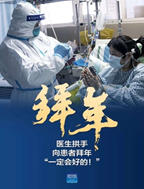
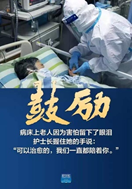
“From now on, I will go and help colleagues in the fever clinic. In 2003, SARS swept China. I chose Clinical Medicine after the college entrance examination. Seventeen years later, it is my turn to build on the legacy of my predecessors and fight against the novel coronavirus”, said He Dequan, a doctor of the Third Affiliated Hospital of Guangzhou Medical University. He posted the words of his devotion in his Wechat Moments. His words are reminiscent of 2003 when SARS took away lives of doctors and nurses. As for the doctors and nurses like him, they are carrying on with the conviction and devotion inherited from their predecessors.
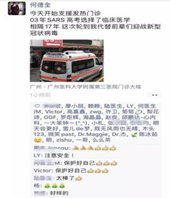
“In 2003, my father was fighting against SARS, and in 2020, my elder sister is combating the novel coronavirus. I wish for all the people to be blessed, without pains from diseases and medication. Salute to all doctors and nurses”, someone posted the story of his family on Sina Weibo.
“I always regret that I didn’t serve in Xiaotangshan Hospital.” said Chen Dechang, the doctor of Shanghai Ruijin Hospital. Both his wife and him are doctors who were once on active service. He received the summons to go and support Wuhan while having dinner on the Eve of Spring Festival. Without a second thought, he accepted the call for the mission.
Just as Henry Norman Bethune, a thoracic surgeon and a social activist who once acted heroically on the battlefield of both Spain and China, said, “The happiest thing for our medical staff is to save the wounded and reduce their pain. And for those missions, time is life.” All medical staff at the frontline have the same belief, doing whatever they can to help patients feel better both physically and mentally.
In the fight COVID-19, we have witnessed numerous moving stories of doctors and nurses. Some of them had their long hair cut in order to save time in changing protective equipment, some even fell asleep while standing due to fatigue, some pasted papercuts to windows of wards in the New Year’s Eve or sang the song My Motherland and Me with patients in order to encourage them, and some sacrificed. According to statistics released by the National Health Commission of the PRC, as of 24:00 Beijing time, 11 February 2020, the number of medical staff infected in the line of duty reached 1716, accounting for about 40% of total confirmed cases of medical staff and 3.8% of confirmed cases nationwide, and six died, making up 0.4% of total deaths in China. Those medical staff are the bravest heroes in harm’s way. Their selfless dedication warms the world.
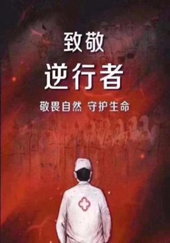
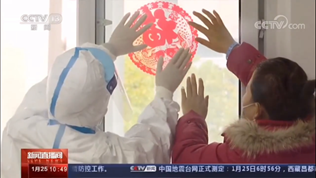
Up to February 24, 41,600 medical professionals with tons of medical equipment arrived in Hubei province. Doctors and nurses in different parts of China volunteered to help their colleagues at the expense of separating with their families. Medical support from all parts of the country started the Eve of Spring Festival when 136 medical professionals left for Wuhan from Shanghai. On the first day of Spring Festival, 128 doctors and nurses departed from Guangdong province and 450 in the military headed for this “isolated” city.
Approaching the end of Spring Festival, several provinces and cities deployed their second medical team, and even the third for some hospitals. Several prestigious hospital teams heading towards Wuhan included Beijing Xiehe Hospital and Peking University People’s Hospital in Beijing, Fudan University Zhongshan Hospital in Shanghai, Xinagya Hospital Central South University in Hunan province and several affiliated hospitals to Sun Yat-Sen University in Guangdong province.
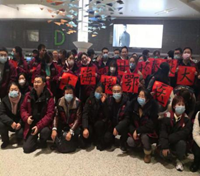

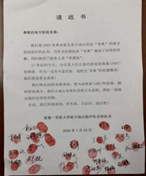

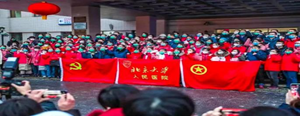
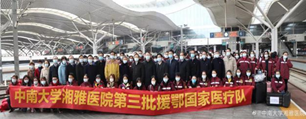
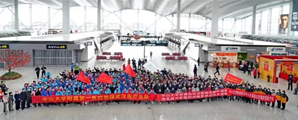
Since February 3, 1,400 health professionals in the military assembled in Huoshenshan hospital providing medical services for the patients. Many of them have fought against SARS in Xiaotangshan hospital or have been summoned to Africa in the battle against Ebola.
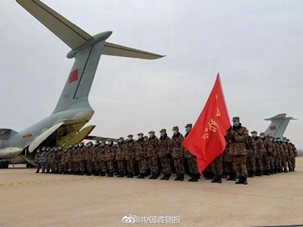
Wrapped in multiple layers of protective equipment for a long period of time, their shirts were soaked, their hands creased and their faces were full of dents and wrinkles. They even drank less water to save on protective clothing equipment, because once they took it off to use the bathroom, they would change a new set. During a short break, exhausted doctors and nurses slept on the floor, still with their protective gear on.
Hupei is a nurse from Hunan Children’s Hospital and her hands are bruised and scarred after being immersed in and repeatedly washed with disinfectant, hand sanitizer and talc powder.
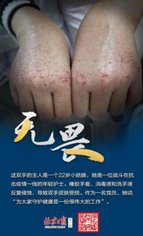
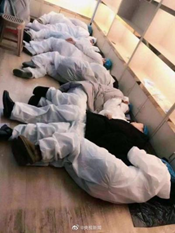
Among the first team of 450 military doctors and nurses, two photos of a female nurse from the Third Military Medical University moved us to tears On January 25, Liu Li was captured ready to take an injection of thymosin to enhance her immunity. After six days in Wuhan, she looked fragile and exhausted. The dent of the mask on her face tells us that she has been in the wards for a long time.
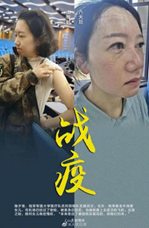
For people who had experienced or witnessed the “demon” sweeping Beijing city 17 years ago, these pictures might bring them back to 2003. When SARS hit the capital of China and the outbreak was worsening day by day, 1,200 doctors and nurses in various military divisions arrived at Xiaotangshan hospital on May 6, 2003. They stayed there away from home until June 20, when the last 18 patients were discharged with full recovery.
“Please don’t speak of my name. My family will be worried if they see me on TV”.
“Mom is just about to become a superman and beat down the monsters”.
“I love you”.
“Back home safe and sound”.
“I know she is here”.
“Is that you?”.
These are the voices heard from the doctors, nurses and their family members 17 years later when novel coronavirus hit China.
This is the simplest way to express a human’s love. On February 14, a day when lovers express their affection with greetings and gifts, healthcare workers left no time for their partners, spending this romantic day in hospital wards.
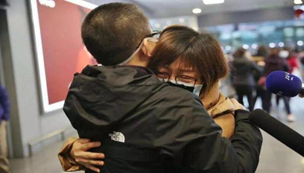
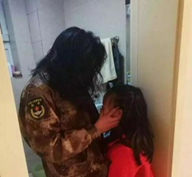
Each of us has many roles to play. Those doctors and nurses are the soldiers. They are answering the call of Henry Norman Bethune to the front of the combat field and to where the patients are in need”.
Up to February 24, Guangdong province alone has sent 2,431 medical workers to aid Hubei province. Recently medias in Guangdong province released a set of photos, telling the stories of the heroes in harm’s way. Through these pictures, we can feel their devotion and determination to their vocation and be moved by their love for families.
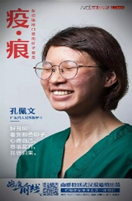
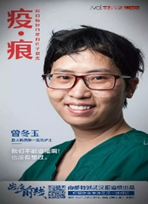
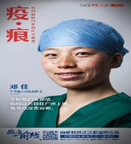
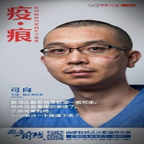
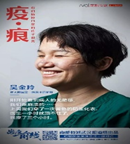
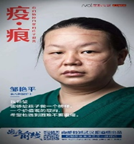
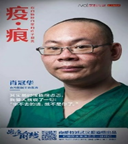
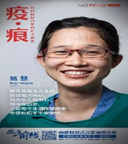
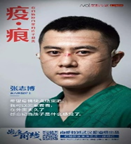
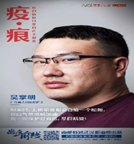
Different from every Spring Festival Gala before, this year witnessed more tears than laughter. On behalf of all, a performance with the title of “Love Bridges All” paid tribute to all the doctors and nurses in the battle against the COVID-19 virus.

Up to February 24, due to the collaboration between 41,600 medical workers to Hubei province and the local health professionals, a decline in cases becomes possible.
Chinese Scientists and Researchers join the Wisdom and Efforts
Since the birth of modern medicine, scientists have been waging war against viruses. Laboratories are the frontline where scientists withhold the invasion of virus with knowledge as weapons. Any breakthrough in labs may pave the way toward victory. Chinese people have a strong memory of what happened 17 years ago when SARS invaded. China suffered great loss at that time, partly because of limitations in medical science.
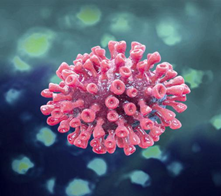
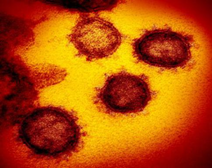
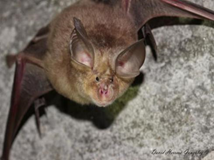
On Dec 31, 2019, Hubei province announced that there had been some unknown viral pneumonia cases reported in Wuhan. The first strain of the mysterious virus was isolated on January 2, 2020 in Wuhan. Several weeks later, researchers in other provinces sampled the virus from patients and settled down to obtain strains of the virus. On January 24, Zhejiang Provincial Center for Disease Control and Prevention isolated the strains within 48 hours. It was the first provincial CDC to obtain the strains. The researchers could analyze the virus titer of the strains to develop vaccines and detection kits.
In order to help other countries prevent Covid-19, China shared the information of the first strain of the virus with the world on January 24. The genome sequence of the virus China released is helpful to diagnose the new pneumonia and to advance research on it. Strain samples are essential for China in the battle against Covid-19. By analyzing the strains, researchers learn about how the virus destroys organs and what symptoms it causes. The findings enable researchers to make detection kits for the new virus. Four types of detection kits that were developed within a short period of time went on sale on January 26, just two days after China published the genome sequence.
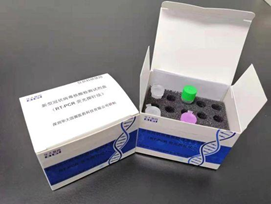
As research on Covid-19 advances in depth, Chinese researchers are selecting potential cures for the novel pneumonia. Effective cures may be a game changer during an epidemic, so searching for cures is one of scientists’ priorities. A research team led by professor Li Lanjuan, a prominent Chinese epidemiologist at Zhejiang University, declared on February 4 that they had found two drugs, Abidol and Darunavir, effective in preliminary in-vitro testing for inhibiting the virus. Li suggested that the drugs be included in treating coronavirus-caused pneumonia. After some scientists recommended remdesivir, a drug developed originally for Ebola, be tested in patients, China initiated clinic trials in the China-Japan Friendship Hospital to test the efficacy and safety of the drug. Researchers are aided by the Jack Ma Foundation, which offered 10 million yuan to support the development of vaccines. On February 13, the foundation announced it would cooperate with the Guangzhou Institute of Respiratory Health by offering financial support. Alibaba Cloud, a Chinese high-tech company dedicating itself to AI technology and cloud computing, will assist the institute in research on coronavirus, providing its powerful cloud computing capacity freely, with which researchers can test the genome sequence of Covid-19 and develop new medicines more effectively.
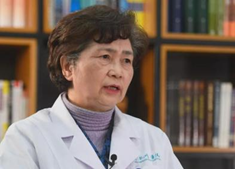
Except for research on the effect of western medicine, scientists also conduct research on whether or not traditional Chinese medicine (TCM) can cure novel coronavirus pneumonia. Leading scientists from the Chinese Academy of Engineering assembled in the epicenter of the outbreak, working alongside the medical workers. Some of them insist TCM be included in treatment as a supplement to western medicine. As of January 23, Tong Xiaolin, an Academician of Chinese Academy of Engineering and Lead Researcher of China Academy of Chinese Medical Sciences, has been treating patients in Wuhan. TCM therapies for pneumonia patients are improved by his medical team, after they finished field investigations in hospitals and communities. Another academician of Chinese Academy of Engineering, Zhang Bolin, is also working to improve the effect of TCM in curing the pneumonia. The 72-year-old man chooses to devote himself to fighting Covid-19 in Wuhan. He strives to select the best TCM treatment for pneumonia patients through clinic trials.
Both western medicine and TCM have been used respectively to cure different patients. Severe cases, for whom Intensive Care Unit and respirators are essential to sustain their life, receive western medicine treatment, while TCM treatment is for mild ones who are expected to recover by boosting their immunity system.
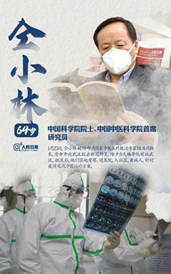
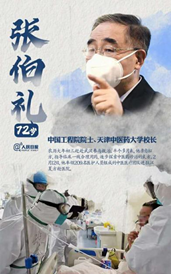
Chinese Government in Action
China has been hit by three epidemics since 2000: SARS, H1N1 and Covid-19. Notable changes in public-health political posture and the rapid development of a national and international consortium allow the government and hospitals to make timely decisions. Having drawn lessons from the outbreaks of SARS and H1N1, the Chinese central government is adopting a series of decisive measures to contain the outbreak of Covid-19. January 22 was the day when the central government became involved in curbing the outbreak. The next day Wuhan was quarantined to keep the virus from spreading and to end the epidemic in a shorter time. Cars are banned from the roads in downtown Wuhan. According to an article published in Nature Medicine on January 27, 2020, it is acknowledged that the Chinese government’s response to this new outbreak had been swift.
On January 23, Wuhan was locked down. Locking down a city of more than 10 million requires the resolution of the Chinese government and the backing up of its people. Although big events in spring festival are canceled and citizens follow official instructions avoiding unnecessary outdoor movement, Chinese people still find ways to cheer each other up. Four days after Wuhan was put into lockdown, a residential complex in the city spontaneously held an indoor event to show support for each other. With windows open, residents sang the national anthem together, and some shouted “Wuhan jiayou” which can be translated into “Stay strong Wuhan”. “Wuhan jiayou” is a catchphrase with which people voice support. Good deeds on the local have been covered by the BBC in a feature named “Coronavirus: Tales of Solidarity from China’s Virus-hit Wuhan”. On January 27, Premier Li Keqiang arrived in Wuhan, greeting the staff fighting against coronavirus and encouraging people in Wuhan to pull through the difficult times together.
The central government has managed to keep people safe in various ways. On the day when the Premier inspected Wuhan, the State Council decided that the Spring Festival holiday would be extended to prevent transmission and infection. Public Prevention of Pneumonia Caused by Novel Coronavirus was issued on January 30, outlining guidelines for the public to prevent infection and transmission.
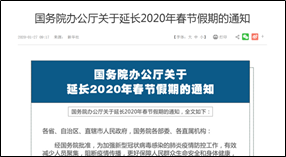
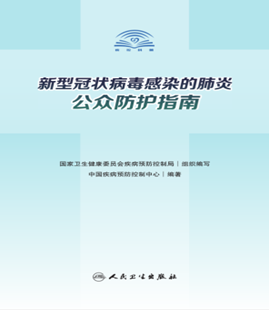
In addition to measures taken by the central government, all provinces are taking responsive measures to stop the coronavirus from spreading. Given that confirmed and suspected cases are mounting outside of Hubei province, many provinces like Guangdong, Zhejiang and Sichuan activated first-level public health emergency in response. As of January 26, Guangdong has issued two notifications that require face masks in public spaces. Numerous temperature monitoring systems have been installed in different places to screen anyone who entered the province. People receive text messages on how to prevent infection on a regular basis and on where to find designated hospitals. Health authorities at all levels roll out plans of curbing transmission. People should report their health conditions in order for local health departments to track suspected cases.
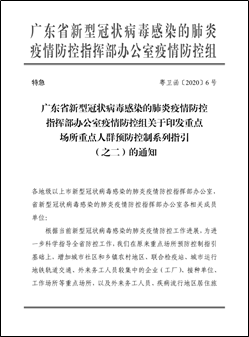
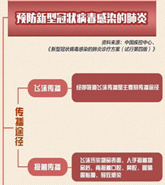
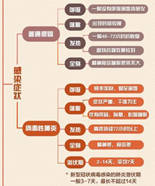
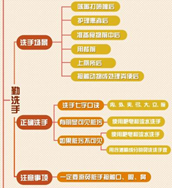
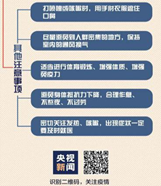
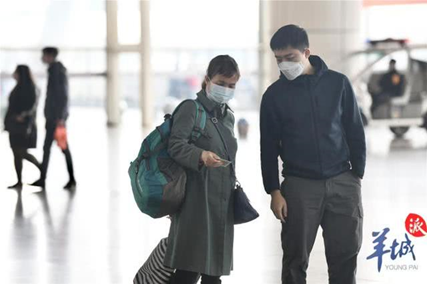

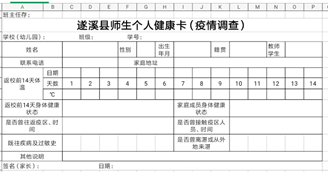
In addition to containment measures in Wuhan, the Chinese government sees to it that every pneumonia patient receives decent medical treatment. Hospitals are always the first places where patients can count on finding help to survive. During an outbreak, more hospital beds mean more chances of saving lives. Yet, hospitals in Wuhan have been overrun by large numbers of pneumonia patients, and there are no beds for new cases, as more people become infected. New hospitals are in urgent need. The Chinese government determined to build two makeshift hospitals whose wards are comparable to the Xiaotangshan hospital, in which all severe cases were centered during the critical period. In 2003, extra wards for SARS patients were built in only seven days at the Xiaotangshan hospital.
The two makeshift hospitals -- Huoshenshan Hospitals and Leishenshan Hospitals in Wuhan -- are located in the suburbs of Wuhan, with 2,000 beds for diagnosed patients. Construction was scheduled to take ten days. This meant that workers were expected to attempt the “impossible” mission by accomplishing the work at the “speed of light”. Huoshenshan and Leishenshan had drawn the attention of the Chinese people because of their importance in assisting Wuhan, epicenter of the epidemic. CCTV also provided live coverage of the entire process of construction on different websites and tens of millions of netizens witnessed how this great project was born. Nicknames were given to all the machinery on the construction sites. Such an arduous construction work, by netizens’ narration, became a wave of love and a light of hope.
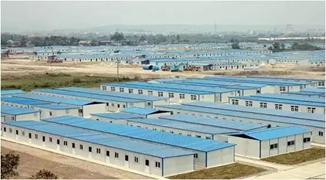
A miracle performed by Chinese people: the makeshift wards for SARS patients
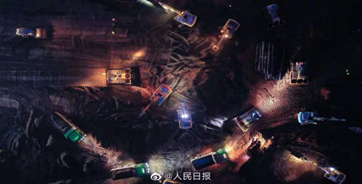
The makeshift wards for COVID-19 critically ill patients
In spite of two new makeshift medical facilities, hospitals and designated clinics in Wuhan are crowded with patients and it is impossible to build more makeshift hospitals like Huoshenshan, as the peak of the epidemic might occur at any time. On February 3, three mobile cabin hospitals were established overnight. On the second day, 11 stadiums were requisitioned as mobile cabin hospitals.
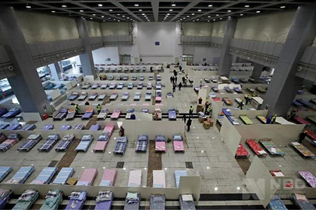
People’s Liberation Army of China: the Great Wall of Steel
During war time, the People’s Liberation Army of China makes itself a wall between the people and their enemy, while in peacetime it provides help whenever the people are in need. The PLA joins hands with the Wuhan government to turn the tide against the epidemic. Receiving orders from President Xi, medical teams across the country converged on air first to hurry off to Wuhan, packing tons of medicare resources. Military surgeons, officers, soldiers, aircraft, trucks and buses all arrived in designated places, saving people’s lives in those pneumonia-affected areas in Hubei province. Medics have alleviated pressure on the local government by taking over Huoshenshan hospital, which was operational the second day after it was transferred to military medical teams. Troops are mobilized to transport supplies and relief resources are poured in to keep the city running. As the number of confirmed cases surge, more medical staff have been sent from the military to Hubei province.
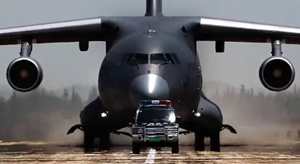
The World Health Organization: Trust and Support
Given that confirmed cases keep mounting in China, WHO has been keenly observing the outbreak. On January 22 and 23, the Director-General Tedros Adhanom Ghebreyesus held emergency meetings with his committee to discuss the coronavirus. After the meetings, WHO postponed the decision on declaring the outbreak in China as a global health emergency. Later on, Tedros visited China, met with President Xi Jinping and expressed WHO’s confidence in China’s ability to control the epidemic. On January 30, the organization declared the current epidemic as a Public Health Emergency of International Concern, but Tedros emphasized “WHO doesn’t recommend and actually opposes any restrictions for travel and trade or other measures against China”. WHO called for international cooperation to seize the “period of opportunity” to stop the novel coronavirus. Strategic Preparedness and Response Plan for 2019 Novel Coronavirus that is aimed to provide guidance for countries in preventing possible transmission, was launched on February 5. WHO decides to solicit $675 million to initiate the plan. China continue to work with WHO to end the epidemic. The organization has been working closely with the Chinese government. The senior adviser to the director-general of the WHO Bruce Aylward and a panel of 25 experts headed for China, investigating several provinces to see how China handled the outbreak. After one-week field investigation, Aylward marveled at China’ effort to curb the epidemic. “Ambitious, aggressive and agile” containment measures adopted by the Chinese government have avoided plenty of potential cases, contributing to an unexpected decline in confirmed cases. In the WHO-China Joint Mission news conference on February 24, Aylward said he was shocked by what he had seen in Wuhan: patients still received ideal treatment, though the local hospitals were running under a severe strain. As more cases confirmed in other parts of the world, Covid-19 spreads disease and anti-Chinese sentiments which are fueled by biased news reports. WHO tries to remove the sentiments by publicly acknowledging Chinese sacrifice in curbing the epidemic. “To the people of Wuhan, it is recognized that the world is in your debt. When this disease finishes, hopefully we will have a chance to thank the people of Wuhan for the role they have played,” Aylward said on the news conference. He proclaimed that his doubt about measures adopted by China was dispelled by what China had achieved.

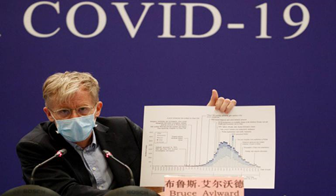
Greatest Love of All Flows
At this unusual moment, masks, protective goggles and coveralls are armors to medical workers at the battlefront. In Wuhan, the epicenter of the outbreak, the supply is in extreme shortage in particular. In this tough relay race, torch is passed on to manufacturers. On January 24, a large number of medical supply factories in China gave up their original plan of suspending operations during Spring Festival and have been racing against the clock to produce medical materials. Some companies even started to run on a 24/7 basis. Many workers chose to stay voluntarily to give up the time to reunite with their family through the whole year. To ensure that the supplies can be delivered to Wuhan as soon as possible, they canceled their travel home. Up to February 1st, about 60% of the mask manufacturers had restored production, with more than 10 million masks being produced per day. Production of N95 masks for medical protective purpose had reached 600,000 a day.
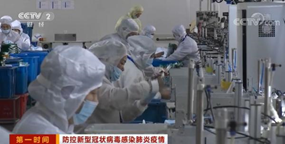
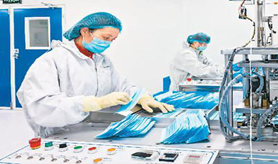
Bio-medical companies have also been ramping up the production of Cobas Taqscreen MPX for coronavirus and the detection reagent for NCP. The BioGerm Medical Technology, one of the three national designated suppliers of the test reagents, was still full of employees on January 24, the eve of Spring Festival. The output of that day alone could test 120,000 people. One director ensured that “our capacity will further enlarge once the market needs”. Up to February 4, the output of the Cobas Taqscreen MPX of the whole nation had reached 77.3 thousand, which was 40 times as many as the suspected cases.
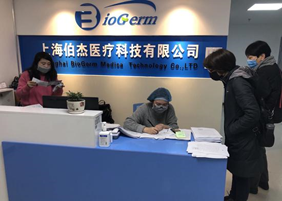

There are some other companies, though not able to produce medical supplies directly, which are earnestly hoping to share and assist. Alibaba, China’s e-commerce giant, coordinated 92 mask suppliers on its supply chain to solve the shortage problem in medical supplies. Some other companies have been working hard to search for medical supplies. For example, JD, one powerful competitor to Taobao, donated 1 million medical masks and 60,000 medical items to support the epidemic control. Some companies set up foundations for the prevention and control, while others donated cash. To date, over 100 companies, from big multinationals like Huawei and Bytedance to small, unknown business, have donated over 14 billion RMB to Wuhan.
The demand for food is also another major concern. Luckily, fresh vegetables and fruits, eggs, meat and other necessities are in sufficient supply with stable prices. To avoid infection contact, online shopping services are readily available. Shopping apps led by Taobao and JD, food delivery apps like Meituan, online supermarkets like Hema Supermarket (a fresh food market of Alibaba) and even mini-programs in WeChat are among the large variety of applications providing home delivery services of fresh foods nearly any time of the day. To further ensure no contact, some pickup sites have been set near communities for residents’ convenience.
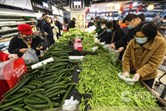
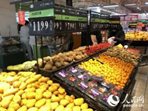


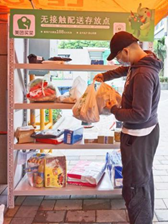
Local people in Wuhan are not lonely living in isolation. Other provinces are mobilizing their food resources to help Wuhan. In 2003, Shouguang city in Shandong province in East China, donated 225,000 kilograms of vegetables to Beijing, the epicenter of SARS. Today, Shouguang, as China’s major vegetable production base, is responsible for providing 600 tons of fresh greens to Wuhan every day since January 28. In addition, Wuhan has received 130 tons of Chinese cabbage from Shenyang province, 130 tons of potatoes from Inner Mongolia, and 160 tons of white radishes from Jiangsu province.
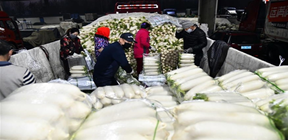


If you ask me, what impressed you most during the past one month when China united in the war to contain Covid-19, my answer is, we ARE moved by each ordinary Chinese people all the time. They are unsung heroes who safeguard our communities and our country. As Gordon B. Hinckley said, “the work of the Lord is done by ordinary people in an extraordinary way”.
While doctors and nurses are saving and protecting lives around the clock, thousands of volunteers are offering their helping hands. Engineers and construction workers built the two specialized hospitals equipped with 2,500 beds in less than 15 days. Restaurants, hotels, even neighbouring residents offer to cook for medical professionals. Delivery men take the risk of infection to ensure this city no short of food. Their presence in this empty but populous city is like a beacon, signaling its normal functioning. Drivers turn cars and buses into free shuttles for medical workers and patients. Cleaners take off their usual reflective vests and put on protective clothes to help clean hospitals. Braving freezing weather, community workers leave no stone unturned in checking on every block to make sure that no family in need is left unattended to. Civil police help transport patients from communities to hospitals, exposing themselves to great danger of infection. Supermarket staff still stick to their jobs in case every citizen can buy their necessities. Every ordinary person is ready to join the battle in his own way.
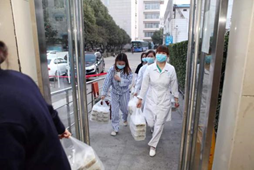
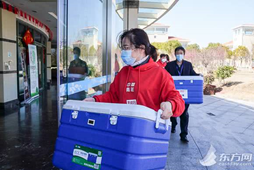
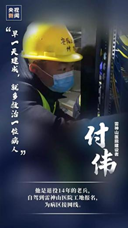
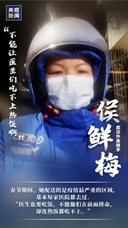
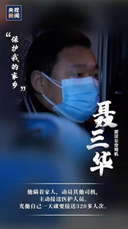

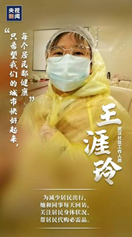
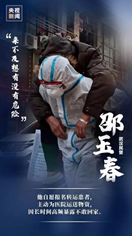
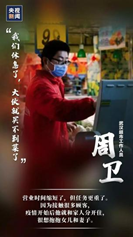
Outside Wuhan, unsung heroes are also running to hand on the torches. In Anhui, a young man has kept sending 500 facial masks to the local police station and left before policemen could extend gratefulness every day since the outbreak. In Sichuan, an old man left more than 10,000 RMB wrapped with a plastic bag to the local government, saying “please help me take it to the people in Wuhan”. Later, it was found that the money was all his savings for the past five years. In Zhejiang, a 23-year-old man and his friends anonymously donated 250,000 medical masks to Wuhan. In Shenzhen, a landlord offered a cut of 800,000 yuan rent for more than 1,000 tenants. Online, people are setting up chat groups to collect donations, both money and medical supplies. We may never know who they are, but we know they are the warriors in this fight.
Beyond China mainland, we won’t forget the 680,000 fellow countrymen worldwide standing with us side by side. On January 23, Wuhan University New York Alumni Association already launched crowdfunding on the Internet, calling for the involvement from all Chinese overseas. Within only a few days, $700,000 was collected from 6,500 compatriots. Up to January 27, the Chinese Federation of Canada already delivered 100,000 masks to Wuhan. In the United States, Chinese overseas students have donated 3.4 million protective coveralls to their motherland, and they are still searching for more medical supplies from the around the globe. From Europe to Asia, from America to Oceania, Chinese countrymen are mobilizing all the resources, activating all the channels and removing all the obstacles to support the epidemic response in Wuhan and Hubei. That’s how we forge our national character. With solidarity, we are resilient enough to weather the storm and strong enough to defeat the virus.
China is not fighting alone. The international community has given us valuable moral and material support. Russia delivered 23 tons of medical supplies through a chartered military aircraft with five epidemiological experts to assist China. Pakistan, our iron-clad brother, sent to China 300,000 masks, 800 protective suits and 6,800 medical gloves. That’s nearly all the medical supplies in its stock. ROK offered medical supplies worth $500, including 2 million masks, 1 million medical masks, 100,000 protective suits and 100,000 goggles. Japan’s government delivered nine tons of medical supplies. Belarus provided a total of 20 tons; the European Union, 12 tons; and Kazakhstan, 13.6 tons. At the peak of the outbreak, Prime Minister Hun Sen of Cambodia paid a special visit to Beijing to offer his staunch support for China. Through a specially made video, Prime Minister Prayut Chan-o-cha of Thailand conveyed the message that Thailand and China are one family committed to fighting the epidemic together.
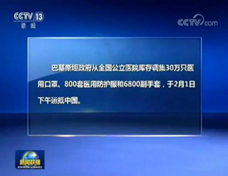

A Japanese non-governmental group sent assistance supplies to China, attached with ancient Chinese poetic lines: “Fear not the want of armor, for mine is also yours to wear”, conveying a touching message of empathy from a close neighbor. Malaysian people fundraised 100 million medical gloves. UK pupils performed a Chinese song “Fill the World with Love”; the Burj Khalifa Tower in the UAE was lit up in red in solidarity with China; and from this city, Bayern Munich sent its best wishes to China. Qatar Airways provides free freight services of medical supplies for Chinese embassies and consulates around the world. Assistance also comes from countries including Vietnam, German, Britain, France, Hungry, Australia, Algeria, Iran, and Turkey, to name but a few. Peoples around the world are reaching out to us.

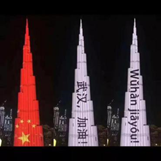
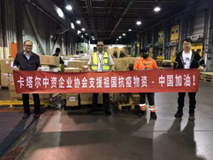
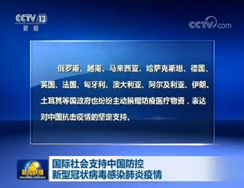
Russia, Vietnam, Malaysia, Kazakhstan, German, the UK, France, Hungary, Australia, Algeria, Iran and Turkey, etc.
This is a record of humans fighting against the virus, a course of how a country unites together with utmost sincerity and a paean of selfless medical staff devoting themselves in the face of natural calamity. In the last century, Mother Teresa said that “Not all of us can do great things. But we can do small things with great love.” According to the latest report, there have already been 1716 medical staff who had been affected when saving patients’ lives. And in this restless winter, China has told such a great story of love among doctors, patients and even strangers. Currently, it is the crucial time that everyone should hold out to the last and keep fighting for the sake of the mankind.
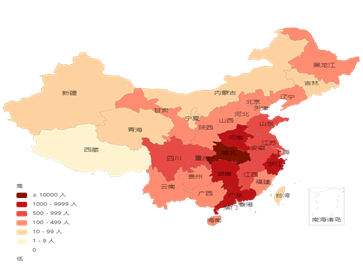

According to the researchers, the novel coronavirus, with symptoms including fever, fatigue, dry cough, shortness of breath and respiratory distress, can be found in different animal hosts, like birds, snakes, marmots, hedgehogs, bats and humans. Snakes often hunt for bats in wild. Reports indicate that snakes were sold in the local wet market in Wuhan, confirming the possibility that the 2019-nCoV might have jumped from the host species bats to snakes and then to humans at the beginning of this coronavirus outbreak.
Most Chinese citizens avoid consuming wild animals, yet some gluttons believe that eating wild animals, especially those rare protected animals, can serve as tonic as nutrients to their body. What they are blind to is the danger of being infected by unknown viruses, bacteria and parasites. Throughout the history, many horrible contagious diseases are caused by gross feeding on animals. The Black Death, also known as Bubonic Plague, is mainly spread through mice bitten by fleas infected with the plague-causing bacterium, Yersinia pestis. And the most likely source of SARS has been identified as wild Chinese Horseshoe bats caught and brought to market. More examples are Avian Influenza occurring among wild aquatic birds and farmed poultry, Ebola spreading from bats to humans and MERS (Middle East Respiratory Syndrome) in contact with dromedary camels.

Animals are not only our friends. Sharing the same living space on this planet, they are also the rightful dwellers as humans. We may share different values and mindsets of life, but the will to survive is common. Protecting them is exactly protecting ourselves, not to mention the importance of maintaining the biodiversity. The outbreak of the COVID-19 has given us a harsh lesson. It alerts us that more restrictions on consuming wild animals should be made in Chinese legislation besides the existing Law of the People's Republic of China on Conservation of Wild Animals.
In China, the combat of COVID-19 has almost been controlled at the moment, while the virus is updating in other countries, Italy, South Korea, Iran, France, Spain, Germany, Japan, England, America, to name a few. Proactively responding to help ensure a safe and sanitary environment and being committed to maintain a trustworthy community is obligation for each of us. Spring is sure to come. Only when the natural disasters befall to the mankind can we better realize our stance and explore the inexhaustible power and will of fighting against it, and finally live in harmony in nature. In the Hippocratic Oath, physicians will prescribe regimens for the good of his patients according to his ability and judgment and never do harm to anyone. Likewise, Sun Simiao, a Chinese physician in Tang Dynasty also unveiled the morality of doctors more than one thousand years ago, “To heal and save lives with the heart of a noble physician”. In the winter, 2020, we have witnessed doctors and nurses’ unconditional love for the patients and their country, sacrificing their own family reunion to safeguard the health of other families. This story can only portray a tiny part of their devotion and bravery. All the names will be recorded, and all the heroes will be remembered.
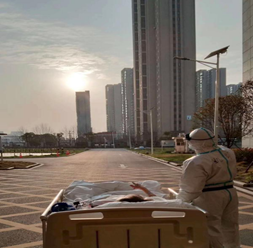
(An 87-year-old COVID-19 patient and his doctor, Liu Kai, watch the sunset on their way back from a CT scan)
[By School of Interpretation and Translation Studies, Guangdong University of Foreign Studies]



